By Frank Iannamico
Due in part to the growing cost and dwindling availability of Class III machine guns and suppressors, considerable interest has shifted to 37mm and 40mm launchers; now there are several options. One of the most popular is the underbarrel M203- type for mounting on a rail under a M16/AR-15 rifle. The underbarrel launchers are available in both 37mm and 40mm. There are also stand-alone models, as well as the old 38mm Federal Laboratories launchers used by police. Original GI and aftermarket 40mm M79 grenade launchers occasionally are offered for sale, and Spike’s Tactical now offers an accurate replica of the U.S. M79 launcher in unrestricted 37mm.
For those considering the purchase of a launcher, the number one question that arises is, “What can I legally fire from the devices?” Well, much depends on the status of the launcher.
Most 37mm launchers are primarily designed to launch flares, signal, smoke and other non-lethal rounds.
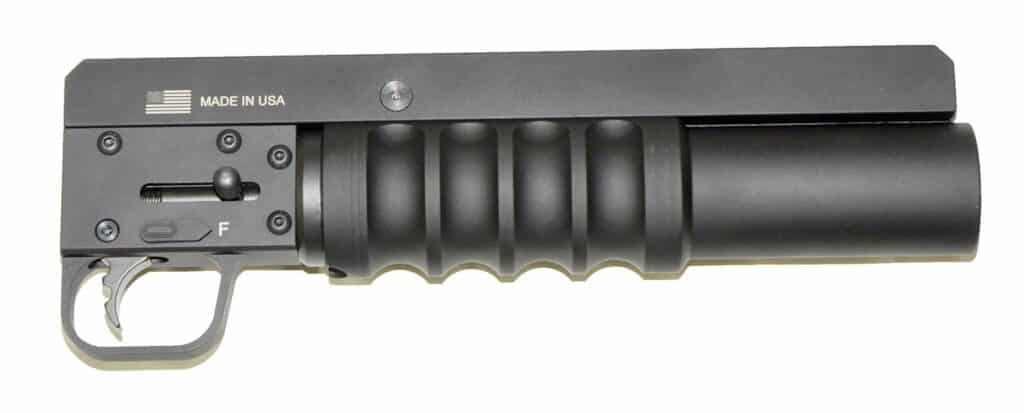
Launcher Rounds
Like the 37mm, 40mm launchers can fire flares and smoke, but 37mm and 40mm launchers registered with ATF as “destructive devices” can also shoot buckshot, flechettes, batons, rubber pellets, bean bags and other anti-personnel rounds. HE (high explosive) rounds are unavailable to the general public; if available, each round is considered a destructive device itself and would require a $200.00 tax per round; they also require a Federal Explosive permit and fall under strict shipping and storage guidelines.
The definition of a “destructive device” is found in 26 U.S.C. § 5845(f). The definition reads as follows:
(1) any explosive, incendiary or poison gas, (A) bomb, (B) grenade, (C) rocket having a propellant charge of more than 4 ounces, (D) missile having an explosive charge of more than 1/4 ounce, (E) mine or (F) similar device;
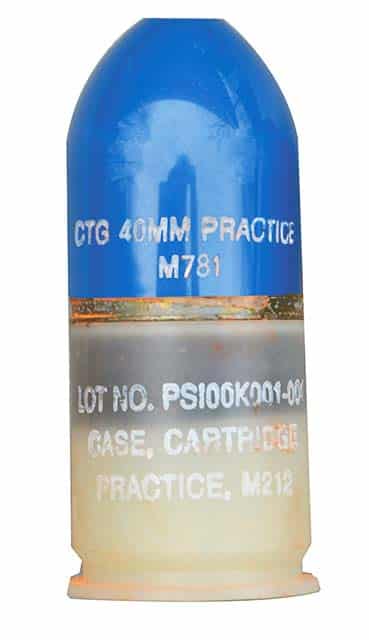
The GI M781 practice rounds can be launched from 40mm launchers. The plastic nose cone is filled with orange chalk powder. The cone shatters when a target is struck emitting an orange cloud to mark where the round hit.
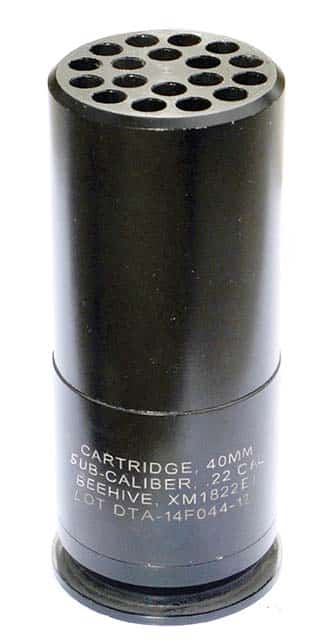
(2) any weapon by whatever name known which will, or which may be readily converted to, expel a projectile by the action of an explosive or other propellant, the barrel or barrels of which have a bore of more than one-half inch in diameter, except a shotgun or shotgun shell which the Secretary finds is generally recognized as particularly suitable for sporting purposes; and
(3) any combination of parts either designed or intended for use in converting any device into a destructive device as defined in subparagraphs (1) and (2) and from which a destructive device may be readily assembled. The term “destructive device” shall not include any device which is neither designed nor redesigned for use as a weapon; any device, although originally designed for use as a weapon, which is redesigned for use as a signaling, pyrotechnic, line throwing, safety or similar device; surplus ordnance sold, loaned or given by the Secretary of the Army, pursuant to the provisions of section 4684(2), 4685 or 4686 of Title 10 of the United States Code; or any other device the Secretary finds is not likely to be used as a weapon, or is an antique or is a rifle which the owner intends to use solely for sporting purposes.
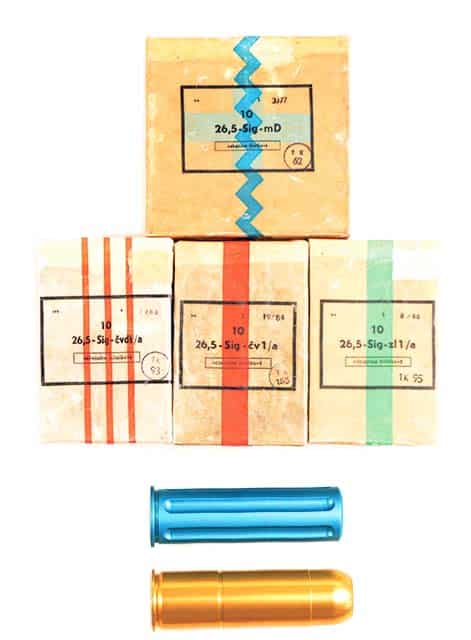
a 37mm to 26.5mm adapter and a 40mm to 26.5mm adapter.
The 40mm launchers can fire the M781, GI chalk practice rounds when they can be found for sale. There are a number of different 40mm practice rounds, but the M781 round with the white nylon M212 case with a blue plastic nose cone is the most commonly available. The lift charge in the M781 cartridge is a .38 S&W BLP blank; the nose cone is filled with a bright orange powder, which is attached on a zinc pusher. Upon impact with a target, the nose cone shatters, and the powder dissipates in an orange cloud to mark where it hit. The practice rounds are designed to simulate the same ballistics as an HE round.
Another interesting round that can be fired from registered 40mm launchers is known as the “Beehive” or “Hornet’s Nest.” The case is usually made of aluminum and holds 10 to 18 .22 rimfire cartridges, depending on the model. The .22 shells are all fired at the same time. This is accomplished by a steel disc with multiple fixed “firing pins.” The disc is actuated by a rifle primer, which thrusts the disc forward and fires the rounds. There are also 40mm shells available for simultaneously firing four .410 gauge shotgun shells.
In addition to all the aforementioned calibers, adapters are available for both 37mm and 40mm devices to launch the surplus Czech 26.5mm or 12-gauge flares and smoke projectiles. Corrosive black powder is used as the lift charge in many 26.5mm projectiles; be sure to thoroughly clean your launcher after firing it. There are adapters available for registered launchers to fire 2 3 / 4-inch and 3-inch, 12-gauge shotgun shells.
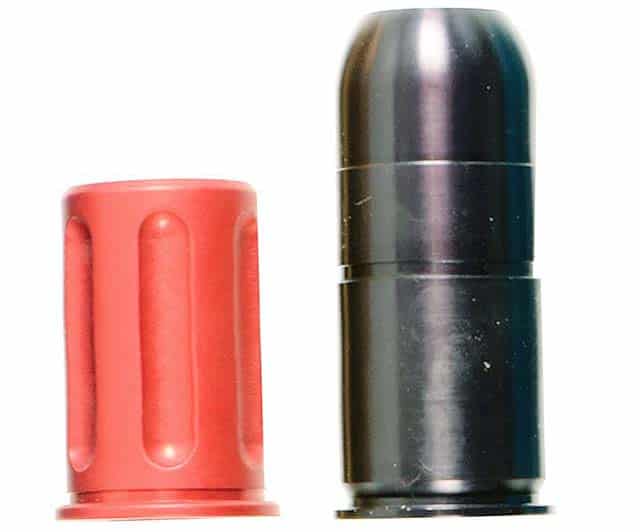
Loading Your Own
There are a number of vendors that sell both loaded ammunition and kits for loading your own ammo for 37mm and 40mm launchers. The loading kits include reloadable plastic or aluminum shells, fuses and plastic or heavy rolled paper payload tubes. Rubber bands are used to assure the tubes are a tight fit inside the shell casing. The less expensive shell design uses a synthetic black powder lift charge ignited by a shotgun shell primer. The disadvantage of the black powder type is the large amount of smoke that is emitted from the muzzle, and black powder is corrosive.

Smokeless Rounds
The other type of shell generally uses the same plastic or paper/cardboard payload tubes, but in place of a somewhat large amount of synthetic black powder, the shell uses a small 5 to 6 grains charge of smokeless pistol powder for the lift charge and a small or large pistol primer for ignition. These shells use a similar high–low pressure system that is used in GI 40mm rounds. A copper burst disc is used to allow the pressure to build up in the high-pressure chamber until it bursts, and the pressure dissipates into the low-pressure chamber; the decreased pressure is used for launching a projectile. This type of shell produces far less smoke upon launch and has a far greater range than the black powder shells. The shells are reloadable; the downside is they are more expensive than the black powder shells, but they are built to last a lifetime. The smokeless shells are available in 37mm and 40mm. The smokeless 40mm M212-type shells can be loaded with the M79-M203 zinc pushers with a rotating band and the blue nose cones. The cones can be filled with powdered chalk normally used for chalk lines for construction projects. The chalk is available in a wide variety of colors.
The purchasing of ready-made ammo for a 37mm or 40mm launcher can get expensive. Substantial savings can be realized by loading your own fodder. Assembling the rounds requires a few tools and supplies: a hot glue gun, rubber bands and payload tubes. Smokeless cases require: primers, a primer punch, copper sheets and a disc cutter (for making burst discs). Loading is not difficult and almost enjoyable. Most reloading kits include instructions, and a number of instructional videos can be found on YouTube.
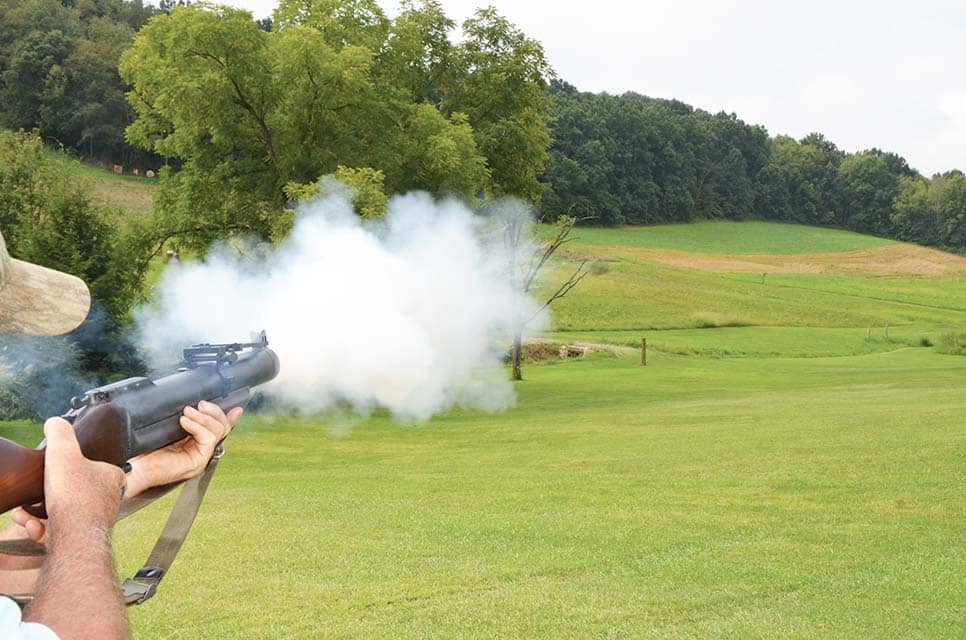
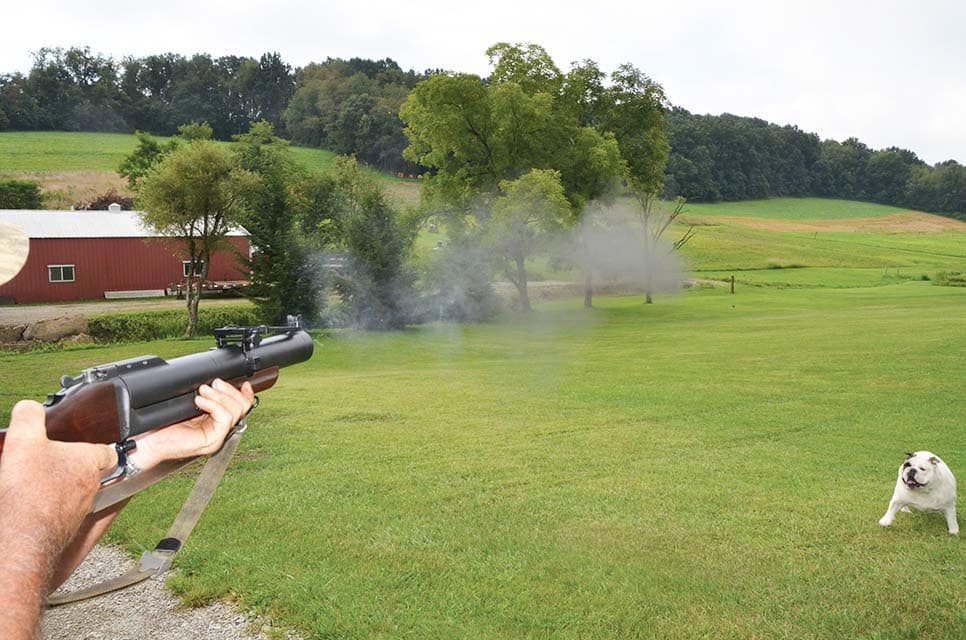
FOR MORE INFORMATION
Pace Launcher Casings, LLC Reloadable 37mm and 40mm smokeless shells
American Specialty Ammo Black powder shells, launchers, fuse, payload tubes
MLR Distributing, LLC Launchers, reloading supplies
Exotic Ammo.com (Ordnance Group LLC) Launchers, 37mm ammo, reloading supplies
DeGroat Tactical Armaments, LLC 40mm .22 caliber Beehive rounds
Spike’s Tactical Launchers 37mm and 40mm
Lewis Machine & Tool Co. (LMT) 40mm Launchers
Grog’s 37mm and 40mm discussion forum
37and40mikemike.com/test/index.php
| This article first appeared in Small Arms Review V23N9 (Nov 2019) |












